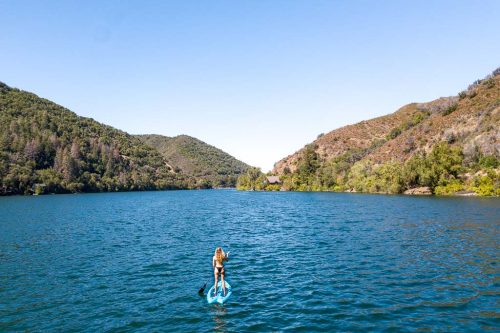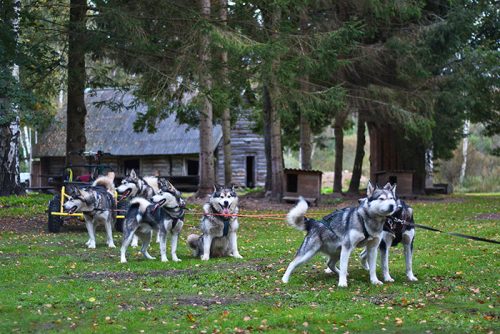Tales From Tacloban After Typhoon Haiyan
Glasses clink as we raise our warm beers to the jubilation that fills the air. Everybody is full of smiles and laughter, and not even the stifling heat can interrupt this joyous moment. I reach for the bottle of Red Horse and give everyone around me a small top up, tilting the glasses slightly to avoid the classic Filipino beer pour, which usually leaves you with more froth than beer. I glance at the other beers around the table with their foamy consistently, looking more like fruit smoothies, and have a small chuckle. Sitting at the end of the table is a giant metal cooking pot full of pancit bihon, one of our favorite Filipino dishes. Stray glass noodles and chunks of chopped up cabbage and carrot are sprawled across the table around the pot. An old wooden serving spoon lies across the top of the pot; it’s a serve yourself type of event.
At the centre of the table is Danny, one of the community leaders of the Calvary Hills barangay and the President of the Calvary Hills Basic Ecclesial Community group (BEC). He has a smile on his face that rarely disappears, and nods his head in approval of the conversations happening around him. The familiar sound of ‘o-o, o-o’, Filipino for yes, bounces around the mixed chatter of Tagalog, English and the local dialogue Waray Waray. A small towel lies across the back of his neck, and he periodically reaches for it to dab at the beads of sweat that build up on his brow. As I look around the table I see most people nonchalantly doing the same, as if it was a common instinctual habit. I guess when you live in the Philippines the heat just becomes second nature.
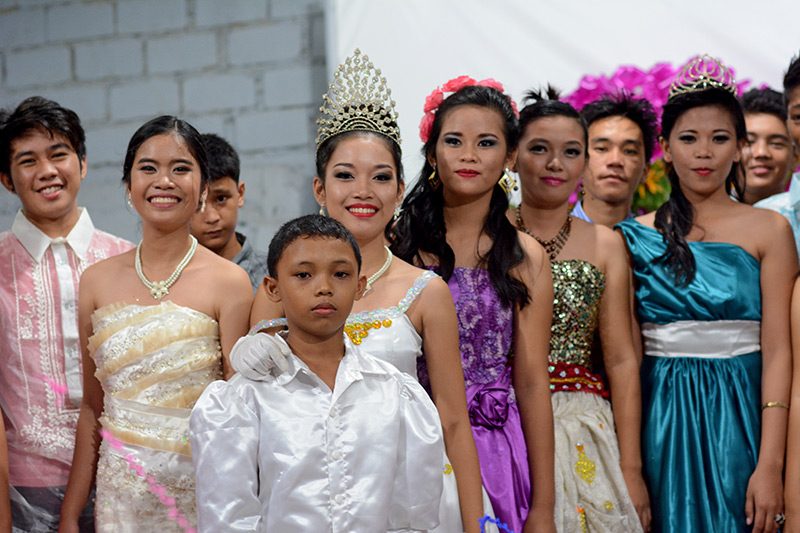
From the crackling speakers the distinct music of the kuratsa, a traditional Filipino dance, reverberates throughout the crowd. A middle-aged woman sits in a plastic chair while a man playfully dances around her; twisting and turning his arms as he generously throws twenty peso notes into the air. When the song finally finishes kids scramble around the floor to collect the notes into an old straw bowl, before handing them to the barangay officials to count. Everyone cheers as the next person takes a seat and the dance repeats.
Livelihood Development Work in Tacloban
Tonight marks the celebration of the local Calvary Hills barangay fiesta, which Christine and I been invited to attend as special guests. Over the last 5 months we’ve been working with this community, specifically the BEC, to help develop a new livelihood program for the typhoon Yolanda survivors working to rebuild their life. Tonight is also an extra celebration because it signifies the opening of a new candle making business for the BEC and the beginning of a new livelihood opportunity for some of its most marginalized members. It has been a long process getting to where they are now and tonight is about celebrating how far they’ve come. For the people of Tacloban their struggles began long before we arrived, but for this moment all of that is forgotten while people smile, laugh, drink and dance kuratsa.
Before arriving in Tacloban in April 2015, eighteen months after super typhoon Yolanda, we didn’t know what to expect. We didn’t know what we were getting into, but we knew we need to help. When the typhoon first made landfall back on that fateful November day in 2013 all we could do was watch in shock from the public television sets in Cuba. At the time our hearts went out to the Filipino people, but there was little we could do at that stage. We were just finishing up a two year trip through Latin America working with various non-profits along the way. We talked about heading to the Philippines, but we couldn’t afford it at the time, so we could only watch on and vow that we’d get there sometime in the future to help.
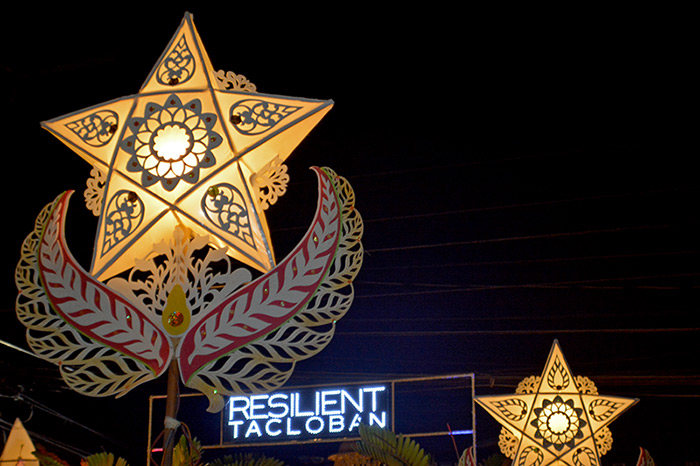
Thankfully that opportunity came late 2014 when we received an opportunity to travel to Tacloban and join in with the long-term livelihood development programs that were still desperately needed. So, after a couple of months of traveling in Southeast Asia, we finally touched down on the small DZR airstrip of Tacloban with open hearts and minds, ready to help wherever we were needed.
Tacloban Two Years After the Typhoon
Initially, from the main road, it was hard to see the trail of damage that typhoon Yolanda had left behind. If you hop aboard a Jeepney downtown, passing the Astrodome and the businesses sprawled along Real Street, it’s hard to see how Tacloban City differs from any other city in the Philippines. Shell gas stations, Jolibee, Mercury Pharmacy, among others, go about their daily business. In true Filipino style people are happy and hospitable. Life goes on as usual, but look a little deeper and you’ll see that the memories of Yolanda are fresh, as a constant reminder to embrace life. Stickers on pedi-cabs, tricycles and shop fronts display ‘Tindog Tacloban’, which signifies the resilience and strength of the people to rise up again from the destruction.
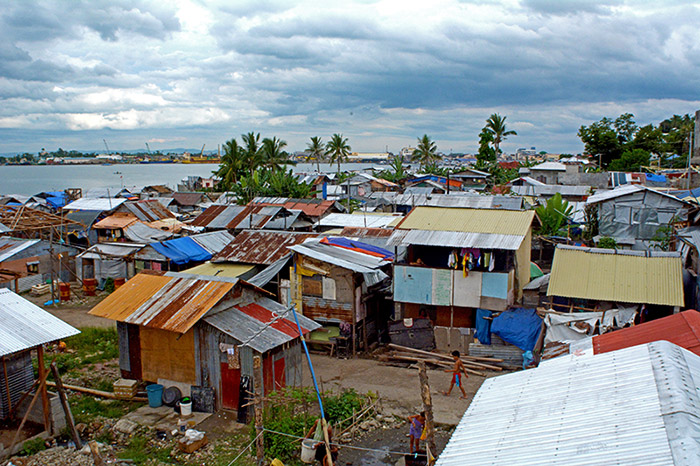
After a couple of weeks in Tacloban we started to see more traces of typhoon Yolanda. We widened our peripherals and saw that beyond the façade of normal life there were still many people in need of assistance. On our motorcycle ride to work everyday we passed a large community of resettled families on the Maharlika Hwy on route to the famous San Juanico Bridge, just before Citi Hardware. From the back of a motorbike, zooming past thinking about work emails and the latest sports results, it’d be easy to miss. But take a walk to the daily fish and vegetable market that is set up on the corner and you’ll start to see how people have been living for the last two years: in temporary shelters made from scraps of materials and no bigger than the average sized lounge room of a house. Despite their long enduring living arrangements they are friendly and welcoming. We’d regularly visit to purchase fruit and vegetables, chatting with the fisherman about their daily catch or asking the ladies when the price of potatoes was finally going to go down again.
These people haven’t been forgotten, but there is just still so much to be done that it’s sometimes hard to figure out where to start. The city government has plans to relocate them up to a new settlement area in Tacloban North, but even that plan isn’t without its challenges. For our time in Tacloban, to avoid the overwhelming and unachievable task of trying to help everyone, we picked a few projects and concentrated our efforts into making sure they were successful. The candle making project in Calvary Hills was one of these success stories, thanks to the assistance of the Calvary Hills community and a Jesuit organization from Manila named Simbahang Lingkod ng Bayan (SLB).
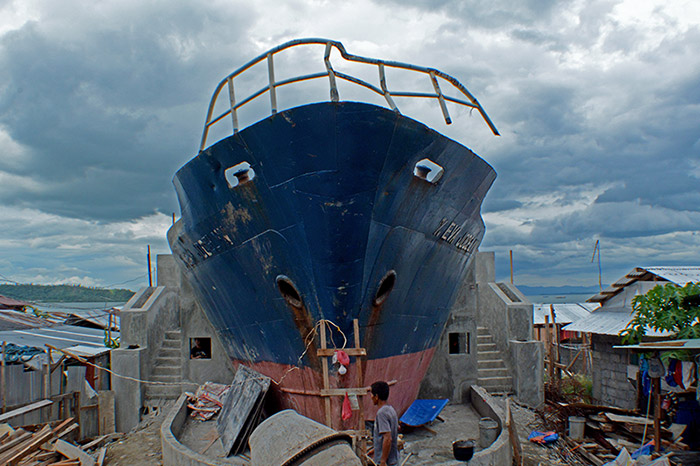
Our Work With the Community
When we first visited the Calvary Hills BEC they were already working with the SLB and we were fortunate enough to be involved in the next stage of their development projects for the community. The SLB had already successfully helped Calvary Hills set up a small community eatery, where members worked in rotational shifts to share the income opportunities. It was a successful operation, but small and in need of expansion. This is how the community developed the candle making project.
The candle making, like many community projects post-Yolanda, wasn’t just about finding a business idea and making it happen: it was a complete process of empowerment, engagement and participation. As community development workers our ultimate goal is to become obsolete, so the community can be fully self-sufficient without external assistance. With this is mind we worked alongside the community as equals, helping them strengthen and grow. Along with organizing technical candle making training we were also involved in various capacity building training workshops for the community, such as business management, branding and marketing, financial literacy, as well as conducting market research, community surveying and data collation. After many month of planning and work the pinnacle of this project occurred just before we left Tacloban in late September, when the team conducted their first official day of production. It was a special day for us to be involved in, and one that we’ll forever cherish and remember. It was a rewarding feeling to finally see a positive aspect emerge from the constant reminders of that tragic November day.

Remembering Typhoon Yolanda
The longer you spend in Tacloban the more you come across subtle reminders of typhoon Yolanda, but over time the sentiment has shifted from helpless victims to strong survivors. Filipinos are proud of their strength and the way they have been able to bounce back form this tragedy. References to Yolanda are reminders for them on a daily basis of this strength, and they wear this tragedy and their response like a badge of honor. Originally we were hesitant to mention Yolanda in conversation, worried that it would invoke raw feelings of loss, but that quickly changed when we witnessed how open people were about it.
People would often recount stories and even joke about some of the funnier things that happened in the events after the typhoon. It’s humor like this that we were surprised to see and hear while in Tacloban. As a close friend of mine said one day when I asked about it, “if we don’t laugh about it somehow, then we will cry”. Stories like this gave us a small insight into what life was like post-Yolanda, and although we would never be able to fully comprehend the full extent, it did help give our work context and feeling. It was emotional and at times difficult, but it was real.
Video of Tacloban Two Years Later
It was this realness that has forever connected us to Tacloban and the people we worked and lived with. We share an unbreakable bond that transcends time, distance and language. Even now, as I sit in a small coffee shop in Chiang Mai, Thailand, I wonder how our special group of ladies from the candle making team are going. Not just their business, but how they are on a personal level. Are they well? Are they happy? Could I still do more to help? It’s tough being apart from them because I always feel like I could be doing more, but I have confidence in their ability. And I know one day I’ll get the chance to visit them again to witness their success.
For now I hold onto my memories tight, cherishing every tiny detail that made them so unique: like the night of the barangay fiesta. The unshakeable memories are still fresh in my mind. The laughter of the children as I chase them around the streets, picking them up and spinning them around until we we’re both too dizzy to walk. The gentle embrace from our ladies as they thanked us and presented us with personalized hand drawn portraits. The sweet creamy texture of mango float.

Nights like this where we danced, and laughed and drank the night away. Where there, in one of the poorest neighborhoods in Tacloban, you wouldn’t immediately notice the tragic aftermath of the super typhoon. Where the happiness and joy for living drowns out, at least for the night, the lingering sadness. Where the youth show their resilience through creativity in the form of impressive dance performances, and their parents and grandparents watch proudly, and appreciative of life in a way that we could never imagine.




